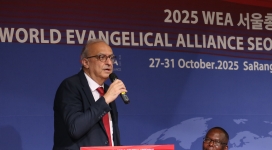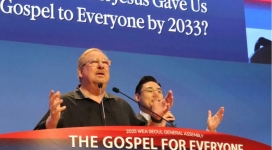The Catholic Archdiocese of Boston announced on Tuesday, May 25, that it would close nearly a fifth of its parishes, marking the largest single round of Roman Catholic Church closings in U.S. history.
"It means the loss of a spiritual home, the place where so much time and resources have been invested, the house where so many important moments in people's lives, from birth to death, have taken place," the Archbishop of Boston Sean O’Malley said at a news conference held Tuesday afternoon.
Earlier that day, the 257 parishes across Boston – the fourth largest archdiocese with 2 million Catholics – received letters containing the long awaited verdict on whether they would stay open or be closed; sixty five of the churches would have to close its doors by the end of the year.
"I wish there was some way that all of these wonderful houses of life and prayer could remain open and alive and full. But there is not," said O'Malley, as he unveiled the full list of closings.
Many critics have suggested the closings were linked to the widespread clergy sexual abuse scandal, which cost the archdiocese $85 million in compensation costs.
However, O’Malley clarified that the parish closures were not linked the lawsuits; he said the payouts to the 500 victims were fully covered by the recent sale of the archbishop’s residences and surrounding land.
Instead, O’Malley gave three main reasons for the closures: more than 30% of the churches are currently in debt; the diocese is operating “in the red” with more than 130 priests aged over 70; many of the cathedrals have become dilapidated. O’Malley also said the sale of the parish buildings would help the archdiocese finance its remaining churches and schools and replenish its pension and medical funds.
“Today is not an easy day for the people of the Archdiocese of Boston,'' said in a written statement. “At this time, over one-third of our parishes are operating in the red.''
James Fisher, the co-director for the Center for American Catholic Studies at Fordham University, said the demographic shifts have also changed the attendance rates in urban churches.
"The key is that in urban America, parishes were almost always ethnic parishes -- whether Italian, Polish, German, Irish and so forth," said Fisher. "They became so identified with those ethnic communities that once the ethnic group no longer inhabited the neighborhood, it threw the fate of the parish up in the air."
Despite the closures, O’Malley encouraged parishioners to view the move as for the best.
"This is not a matter of winners and losers,” said O’Malley. “We are part of something bigger than ourselves.”





![[Exclusive Interview] Evangelist Stephen Tong exhorts the Chinese church to return to the foundations of reformed faith](https://www.gospelherald.com/media/cache/thumbnail/7/23/72340sp_273w_150h_1x_1y.png)

![[Exclusive] Rev. Dr. Richard Tin-Wo Cheung: walking between “charismatic” and “evangelical”](https://www.gospelherald.com/media/cache/thumbnail/7/23/72338sp_273w_150h_1x_1y.jpg)